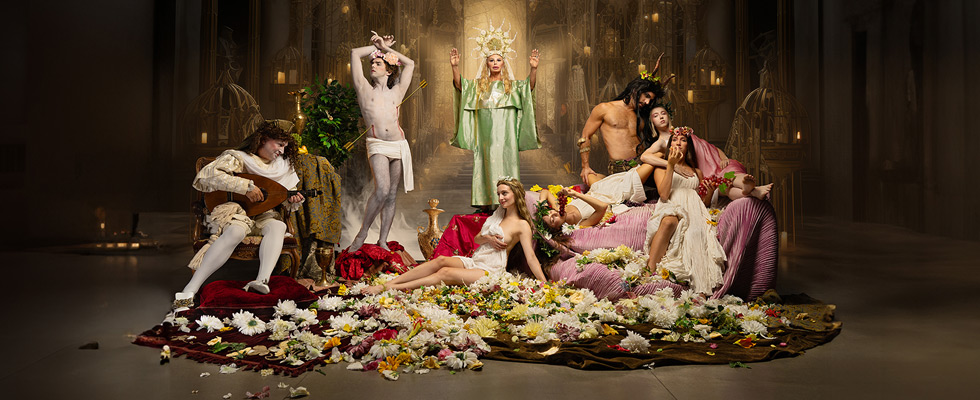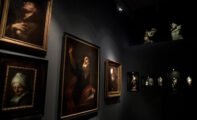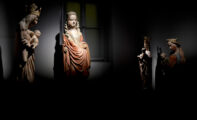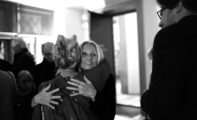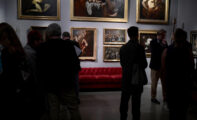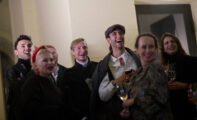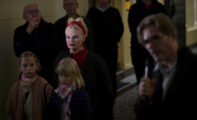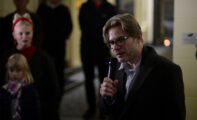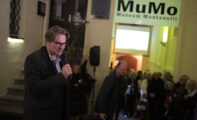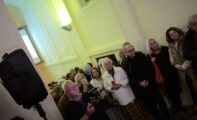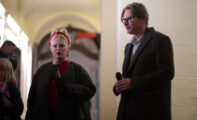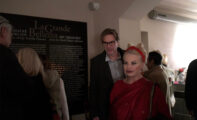The Patrik Šimon collection comprises twenty thousand artworks and encompasses many centuries and many cultures. It is a rich source of knowledge for this astute art historian and collector, whose aim is to present to as wide a public as possible works of old masters in dialogue with cultures you would not expect to see represented in an exhibition of mediaeval madonnas and Baroque splendours. Thus, a Virgin Mary in the high International Gothic style is juxtaposed with a female sculpture from Nigeria, creating a tense yet natural dialogue that forces the viewer to consider whether the ritual potency of a native culture can match the magical power of sacred Christian symbols. Our main focus at Museum Montanelli, however, is old art displayed in stimulating dialogues, such as the fascinating confrontation of Bohemian Baroque with Venetian and Neapolitan masters. The creative spirit of La Grande Bellezza finds further inspiration in the introductory composite photograph that bring to life some of the figures from the over eighty paintings and sculptures displayed in this small space. There is the Virgin Mary as portrayed by prima ballerina Alice Petit; and there the collector himself, seated rather grandly on a throne gazing at his muses, and watched over by a black angel. Transience is the emblem of our lives; none of us can take eternal beauty with us. Platzer’s little Chronos knows all about that.
For a while the rooms of Museum Montanelli become a place of sublime contemplation where, as in every space devoted to the arts, we sense a remarkable consanguinity whose purpose is to show us that the appreciation of beauty, in both form and content, from long-gone cultures is a message from the past, like the Golem’s mystic shem, destined for our often troubled present. And that comparable works from different periods and different stylistic traditions can, despite the facts of art history, complement each other to great effect, because they are linked by the vision, courage and dedication of a world-class collector.
What unifies these Mediaeval sculptures, Italian Renaissance paintings, and prime examples of the European Baroque is their celebration of the human body: physicality as an expression of emotion, desire, and eroticism – but also of profound introspection. Man, in his various roles, masks and guises, is the centre of the universe. This anthropocentric view goes back at least to Socrates, who considered man to be the proper the subject of all that happens in the world. In the Middle Ages this idea survived in the Aristotelean and Ptolemaic traditions and the teaching of St Bonaventura, who maintained that without man the world is unthinkable and purposeless, since the Sun, Moon, stars and all of Nature were created for our benefit. This illusion, despite being debunked by Copernicus, Newton, Darwin and Einstein, is one we still live under today.
The exhibition is arranged around a number of outstanding solitaire pieces: a marble figure by Ginalorenzo Bernini, a canvas by Anthony van Dyck, and works by the Rudolphine masters Hans von Aachen, Roelant Savery and Daniel Fröschl, as well as very rare artefacts such as the Peruvian grave mask or the monumental statue of Omu from West Papua – the embodiment in purely abstract form of a mythical ancestor of the Asmat people. Classical sculpture stands alongside mediaeval treasures from the court culture of France (gilded Madonna from the collection of Oscar Hainauer). Here too – and in no other Czech gallery – you can admire works by Amico Aspertini and Baccio Bandinelli. And those of celebrated Czech painters and sculptors Karel Škréta, Michael Václav Halbax, Petr Brandl, Matthias Bernhard Braun, Jan Kupecký and Norbert Grund. The exhibition’s showpiece is a special room where pictures have been hung in the ‘panelling’ manner once favoured by castle galleries, that is, a dense, floor-to-ceiling display of works from different schools (notably Italian, Flemish and Dutch). At key moments, contemporary artworks are also interposed. These will change in the course of the exhibition, as will the extensive accompanying programme of guided tours, lectures and meetings.
Curator: Patrik Šimon
